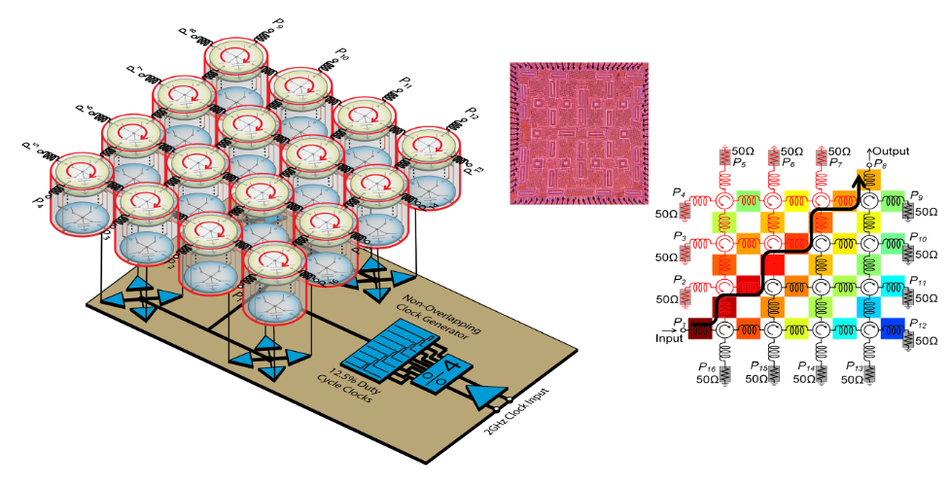New tech can double spectral bandwidth in some 5G systems
Integrated circuit design also could support exponentially more wireless devices
Some materials, like wood, are insulators that block the flow of electricity. Conductors, such as copper, allow for electricity to flow through them. Other materials — semiconductors — can be either/or depending on conditions such as applied electric field or temperature. Unlike wood or copper or silicon, though, topological insulators (TIs) are an exotic state of matter that is conductive on the surface, but not in the bulk. Such unique material properties have great scientific implications and could be of use in a range of technologies, including wireless communications, radar and quantum information processing.
Through a collaborative effort, the research lab of Aravind Nagulu, assistant professor in the Preston M. Green Department of Electrical & Systems Engineering at the McKelvey School of Engineering at Washington University in St. Louis, worked on the project led by co-principal investigators Harish Krishnaswamy, associate professor at Columbia University, and Andrea Alù, professor at City University of New York’s Advanced Science Research Center. They have demonstrated the first implementation of an electromagnetic topological insulator on an integrated chip. The collaborative project’s findings were published May 2 in the journal Nature Electronics. This work is led by Columbia University and City University of New York Advance Science Research Center.
“Topological Insulators have very interesting properties and are useful on their own. However, their real potential emerges when they are coupled with non-reciprocal properties,” Nagulu said.
Non-reciprocity ensures one-way propagation to the electromagnetic (EM) waves. This property can be used in full-duplex communication, a method that allows for transmission and receipt of data using the same frequency at the same time in an efficient manner, thereby doubling the spectral capacity. Additionally, TIs with non-reciprocal properties prevent the decay of signal strength due to back-scattering if the wave comes into contact with any deformities or irregularities within the medium.
The team was able to use precisely engineered time-modulation of transistor switches to achieve non-reciprocity and topological insulating properties on a standard semiconductor IC without the need for exotic materials or extreme conditions.
This tiny integrated chip couples the exotic fields of TIs with real-world application. It can also re-route the EM waves on demand by reconfiguring the individual unit-cells in the lattice, creating a fabric that flexibly and arbitrarily routes EM waves. The team demonstrated how a reconfigurable integrated circuit can be used for emerging 5G wireless applications such as multi-antenna full-duplex wireless communications and multi-antenna impulse radar.
Read Columbia's release here.
This work was supported by the DARPA SPAR program; the AFOSR MURI program; the Office of Naval Research; and the Department of Defense.


